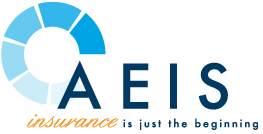Kaiser HRA Plan
Since the Affordable Care Act (ACA) began to truly take affect (and in some cases well before) small to mid-size employers here throughout the San Francisco Bay Area and California at large have had challenges trying to control one of their biggest expenses outside of payroll: their health plan costs. Seemingly every year costs increase at a rate that many would argue is not sustainable in the long term.
Thankfully for employers, Kaiser Permanente has made a major change to their rules around small group health plans (<100 employees). This change represents a huge opportunity for employers to either lower their fixed cost, improve their plan, or both. The following is information about the change and how it can affect employers moving forward.
The Change – Small Group Deductible Funding
Kaiser had a rule against employers funding medical expenses on behalf of employees through an HRA unless the employees were specifically enrolled in an “HRA”-designated plan. But Kaiser has recently rescinded this policy for small groups (<100 employees) meaning that small group employers can now fund an HRA with any Kaiser small group health plan. For the purposes of this article think of an HRA as a strategy to potentially lower costs for employer sponsored health plans . If you want to know more about the specifics of what an HRA is, check out our blog about them here.
Why Does This Matter?
For many small group employers here in the Bay Area, the only way of lowering health insurance cost has simply been choosing a lower cost health plan or carrier. The lower cost usually comes with employees taking on more risk and cost, higher deductibles, narrower provider networks, etc.
Though the ACA has made changes to health insurance, insurance at its very core is a form of risk management. By allowing more liberal use of HRA’s for small group plans, Kaiser has empowered employers to manage risk to control cost rather than forcing companies to make the difficult decision between passing increased cost and risk on to employees or having the company absorb the entire increase.
This can allow a company to either lower cost or to increase benefits, or both if managed properly with the right broker.
How Does This Work?
In brief, an HRA allows an employer to take a very low cost health plan to serve as a sort of “base” or “foundation” and use company dollars to fund some or all of the employees’ accumulated medical claims. While the “base” plan that the employer purchases might be a Bronze level with a very high deductible, the employer can fund the plan so that as far as the employees are concerned, the plan’s benefits mirrors closer to a higher metal tier with lower deductible costs. We often informally refer to this as “turning Bronze into Gold or Platinum”.
As previously mentioned, this HRA setup allows employers to manage risk because the amount of savings realized by the plan sponsor (aka the employer) directly correlates to the amount of medical expenses the employees accumulate. If employees accumulate few and lower cost expenses, then the employer saves more. Lots of bigger expenses result in that savings shrinking.
With this new flexibility to manage risk, small group employers would be wise to leverage strategies that aim to reduce the frequency and severity of medical claims/expenses. Promoting Kaiser’s FREE telehealth programs , educating employees on topics such as preventive care and when to use urgent care instead of the ER , and utilizing second opinion services, etc. can all have a major impact on the ultimate savings for the company.
The employer has flexibility to determine how the HRA will be funded. For a company that wants to offer better benefits but doesn’t want to pay the fixed premium of a Platinum plan, they might fund the plan so that it looks and feels like a Platinum plan to the employees, but has the monthly fixed cost of a Bronze plan.
A company that wants to keep the level of benefits the same but lower the fixed cost can fund the HRA to look like their current plan but have the fixed premium of a Bronze plan.
Moving Ahead
In conclusion, this Kaiser small group policy change represents a major paradigm shift. Employers offering Kaiser HRA Plan will now be able to more actively manage healthcare risk for their employees. This can allow them to achieve lower fixed cost, offer a more competitive healthcare benefit to attract employees and further protect them from financial hardship over healthcare expenses. At the end of the day, aren’t those the reasons employers invest so much into benefits?
Give us a call at AEIS at 650-348-6234 to learn whether this major Kaiser Policy change can yield positive outcomes for you and your company.
Disclaimer: Any compliance-related information in this blog is intended to be informational and does not constitute legal advice regarding any specific situation. Should you require further compliance assistance or legal advice, please consult a licensed attorney.



